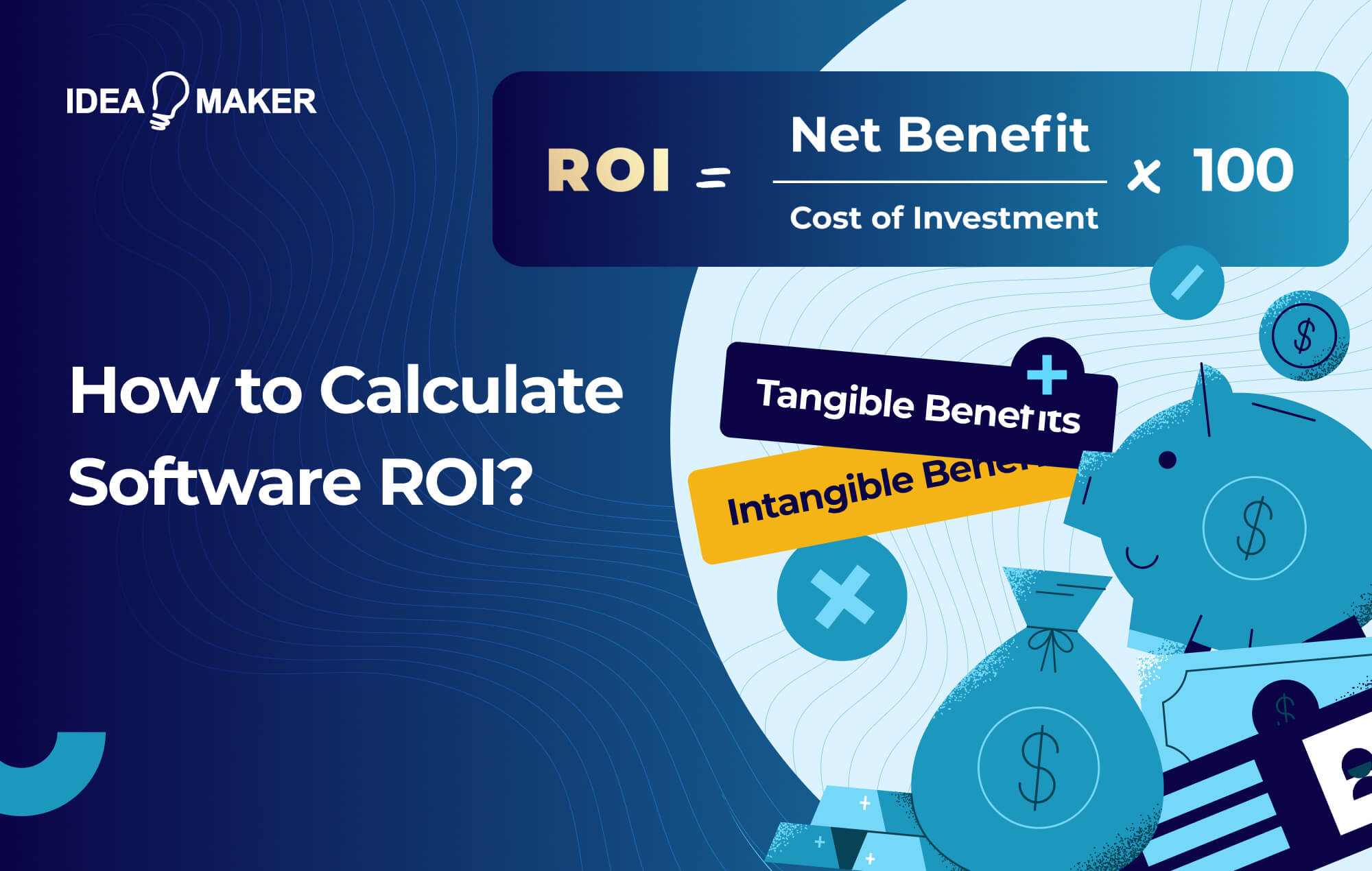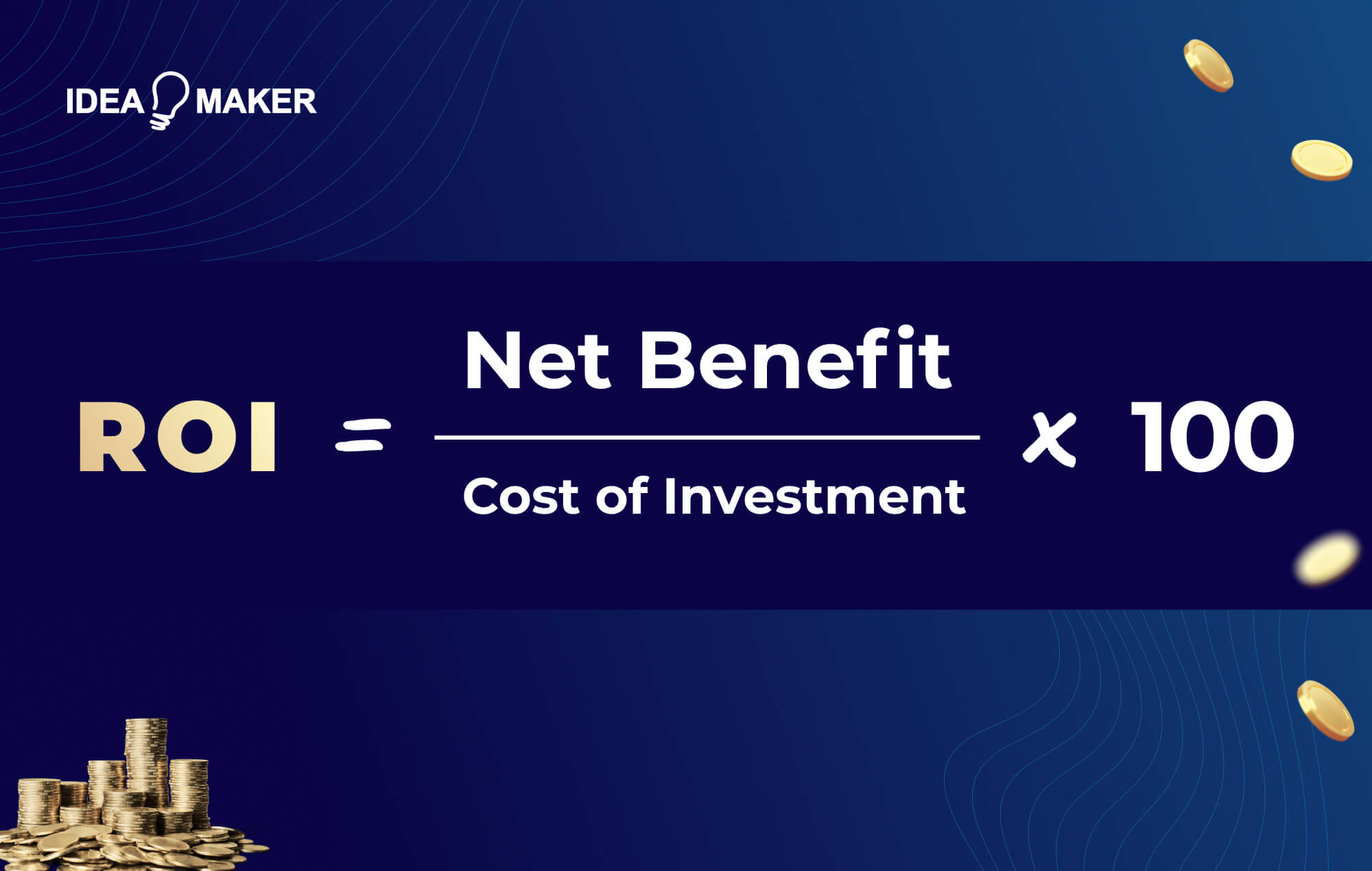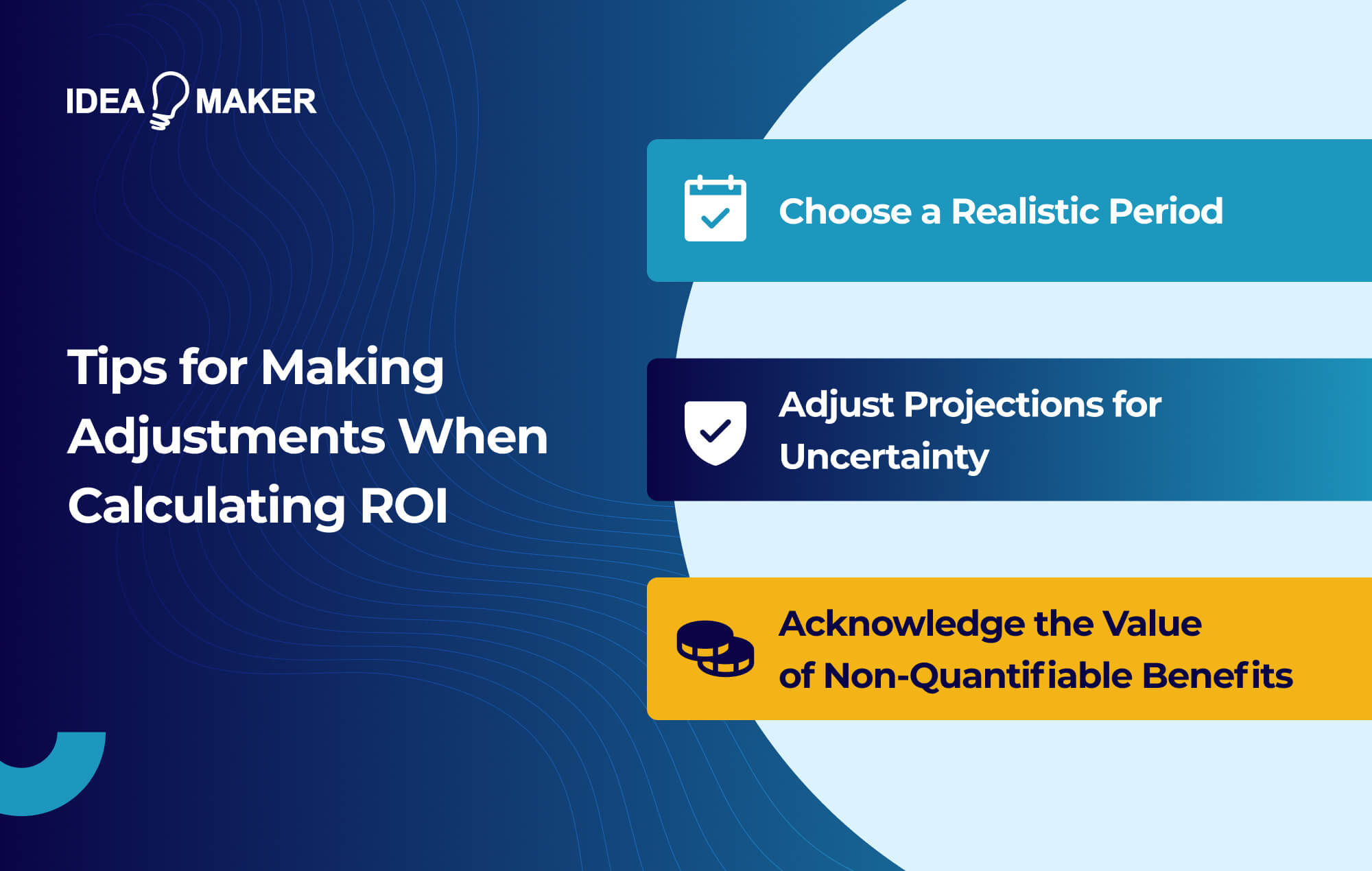Table of Contents
In today’s tech-centric era, more and more businesses are leveraging advanced software solutions to ensure long-term success. This is thanks to the immense capabilities of business software, from streamlining operations and boosting productivity to unlocking growth and innovation.
Many companies, however, neglect to calculate their software’s return on investment (ROI), often resulting in the failure of their project. After all, without a clear understanding of a solution’s value, you run the risk of making ill-informed business decisions. Thoroughly evaluating the ROI of your software initiatives is also crucial to confirm that the investment was indeed worthwhile.
Fortunately, this guide covers everything you need to know about calculating – and maximizing – your software ROI. After reading this, your business should be well equipped with the knowledge needed to reach its full potential. So, without further ado, let’s dive in.
Why Is It Important to Calculate Software ROI?
As a business owner, properly navigating technological investments is imperative to ensure your solution is a valuable asset rather than a waste of money. By calculating your software ROI, you can better determine how much value your business will gain from the solution and whether the benefits outweigh the costs – or vice versa.
This financial metric is not only vital in the initial decision-making process, it can also be used to track the software’s ongoing impact on your business over time. Consequently, your solution’s ROI data can help justify past purchases to stakeholders, secure a budget for future software needs, and ultimately demonstrate the power of technology in your company.
What Kind of Software ROI Can You Expect?
When evaluating software ROI, it’s important to understand that the solution’s impact on your business is the most significant indicator of its long-term value. As a result, you should strive to look beyond the initial price tag, focusing instead on how the software has positively affected your business.
This impact can come in the form of measurable gains, such as improved sales and enhanced productivity, as well as intangible benefits like increased customer and employee satisfaction rates. So, to give you a better understanding of what factors need to be considered when evaluating your software ROI, let’s take a deeper look at these different types of benefits.
Tangible Benefits
Tangible benefits are the clear-cut financial gains that can be measured in numbers. These benefits represent quantifiable improvements that directly impact your bottom lines, including:
- Increased Sales: It should come as no surprise that investing in business software can greatly boost your company’s overall sales. A well-designed customer relationship management (CRM) system, for example, can streamline the sales processes, personalize marketing campaigns, and improve lead management, resulting in higher conversion rates and increased revenue.
- Enhanced Productivity: By automating repetitive tasks, software solutions free up employees to focus their time and efforts on strategic initiatives. This, of course, results in a measurable increase in employee output and overall productivity.
- Decreased Costs: Software solutions offer many opportunities to cut business costs. For instance, with inventory management software, your business can easily optimize your stock levels and minimize the risk of stockouts or overstocking.
- Reduced Time to Market: When your product development process is streamlined, and project management improves, it also results in reduced time to market. This means that, by leveraging business software, your company can bring new products or services to market in less time, gaining a competitive edge.
Intangible Benefits
In addition to clear financial gains, software solutions also offer several qualitative improvements that cannot be measured in dollar terms. These intangible benefits include:
- Employee Satisfaction: By simplifying tasks, reducing errors, and streaming workflows, software solutions often lead to more engaged and happier employees. This then translates to lower turnover rates and an improved team morale.
- Innovation: The ability to automate routine tasks substantially boosts overall efficiency by freeing up valuable employee time and resources. This fosters a culture of innovation, as employees are able to focus on creatively exploring new ideas and product development.
- Well-Defined Processes: With effective software solutions in place, your business will be well poised to enjoy improved data accuracy, minimized errors, and consistent workflows. This ensures smooth and efficient operations, allowing you to achieve your business goals.
- Customer Satisfaction: Business software can also help improve your customer satisfaction rate by offering a highly intuitive and user-friendly online experience. For example, with a software solution, customers can receive quicker responses to their queries, as well as personalized product recommendations based on their purchase history. This will keep customers engaged and pleased with your business, increasing their lifetime value.
How to Calculate Software ROI?
Determining software ROI involves calculating the relationship between the investment’s gains and overall costs. While this may seem complex, there is a standard return-on-investment formula that can help simplify the process:
ROI = (Net Benefit / Cost of Investment) * 100
Now, with this formula in mind, let’s take a brief look at what these variables entail, ensuring your calculations will be as accurate as possible.
Net Benefit
The net benefit refers to the total benefits or profits generated from the software investment. For this, you will need to consider the cost-savings afforded through tangible benefits, as well as the estimated value of the solution’s intangible benefits.
Cost of Investment
The cost of investment consists of all expenses related to the software’s acquisition and implementation. This includes the initial purchase or development price, along with licensing fees and ongoing maintenance costs.
How to Measure the Cost Involved?
When using the return-on-investment formula, accurate calculations, especially in terms of the costs involved, are crucial to confirm the financial viability of your investments. This means you must be sure to look beyond the initial budget, carefully considering the software’s total expenses throughout its life cycle.
Purchase Price or Development Costs
The cost of developing custom software solution essentially acts as the foundation of your software ROI calculation. However, it’s important to note that this initial cost will vary based on whether you choose to purchase a ready-made product or outsource to a bespoke development agency.
- Off-the-Shelf Software: With off-the-shelf software, your core cost will be the licensing fee. Depending on the product, this can come in the form of a one-time purchase or a recurring subscription. You will also incur additional costs if you opt to upgrade from the software’s standard features to access enhanced functionality.
- Custom Software: Custom software development generally involves a more significant upfront investment, as your solution’s cost will be based on the development team’s experience and location, as well as the project scope.
Implementation Costs
After assessing the price to acquire your software, you then need to consider the cost to implement it into your operations. This consists of all expenses related to the installation, software integration, and data migration of your solution, including hiring technical specialists and utilizing third-party tools.
Training Costs
To unlock your software’s full potential, it’s imperative to thoroughly train your team on how to effectively use it. As a result, you will need to invest in onboarding material and trainers, leading to additional expenses.
A well-designed training program will ensure your employees can confidently navigate the new software and minimize the risk of errors. This will help your business save time and resources, and ultimately increase your software ROI.
Maintenance and Upgrade Costs
When investing in a solution for your business, it’s essential to recognize that software is rarely a one-time purchase. Beyond the initial investment and implementation, there are always going to be costs associated with keeping your software up to date and running smoothly. These costs generally fall into two main categories:
- Maintenance Costs: Maintenance costs are recurring fees that cover technical support, software updates and bug fixes. Because every solution is bound to encounter issues during its life cycle, having a reliable technical support team is vital to ensure your software remains well maintained.
- Upgrade Costs: As your business grows, upgrades will routinely need to be made to your software in order to access new features and help maintain existing functionality. The software should also be updated to reflect advancements in technology.
Tips for Making Adjustments When Calculating ROI
As we discussed earlier, calculating software ROI is extremely valuable in assessing the viability and profitability of your investment. However, the formula only provides an estimate of the solution’s expected return on investment. This means that adjustments will need to be made to ensure your calculation is as accurate as possible. Fortunately, by following a few basic tips, you should be able to realistically measure your software ROI.
Choose a Realistic Period
The timeframe you choose for ROI calculations can significantly impact the result’s accuracy. For example, using a short period of time will lead to skewed results, as software solutions often take time to implement and yield complete benefits. Consequently, depending on the project’s complexity, a timeframe of one to three years is generally recommended.
Adjust Projections for Uncertainty
While it’s important to base your software ROI calculation on realistic projections, it is also necessary to factor in potential variances. For instance, when evaluating key metrics like increased revenue and cost savings, it’s best to consider a range of possible outcomes to accommodate future uncertainties.
Acknowledge the Value of Non-Quantifiable Benefits
Although ROI calculations primarily focus on tangible financial gains, the software’s non-quantifiable benefits should also be carefully considered for the most precise results. This is because intangible advantages, such as enhanced customer satisfaction, streamlined operations and improved employee productivity, add massive value to your business and confirm the impact of your investment. While measuring these benefits can be a challenge, surveys and ratings can be used to help support their significance in your calculations.
Example of ROI for a CRM Software
By now, you should have a much better understanding of software ROI and the factors involved in the calculation process. So, let’s now apply this new knowledge to calculate the ROI of a manufacturing company’s CRM software as an example.
Alpha Enterprises
For this example, let’s say the company – Alpha Enterprises – is a small-to-medium enterprise in the manufacturing industry with about 100 sales representatives. These representatives often struggle with managing customer data across multiple spreadsheets in different systems, resulting in missed sales opportunities, errors, and difficulty tracking leads. The company hopes to resolve these issues by implementing a cloud-based CRM system.
Investment Costs
In addition to implementation and training costs, licensing fees will also be required, as the company plans to purchase off-the-shelf software rather than hiring a development team.
- Licensing Fees: $15 per user per month = $18,000 annually
- Implementation Cost: $8,000 for data migration and system configuration
- Training Costs: $2,000 for training materials and program sessions
- Total Investment (1 year): $28,000
Tangible Benefits
After determining one-year investment costs, it’s time to calculate the projected annual benefits of the software. The first step here is to thoroughly evaluate how the CRM software has tangibly benefited the company’s operations.
- Increased Sales Conversion: By streamlining lead management and improving access to customer data, the CRM system has resulted in a 5-percent increase in Alpha Enterprise’s sales conversion rate. So, if the company has an annual sales revenue of $15 million, a 5-percent increase will translate to an additional $75,000, bringing the total to $15.75 million.
- Reduced Administrative Time: The ability to automate workflows has also allowed the company’s sales representatives to save about 4 hours each week – or 192 hours per year – that was otherwise spent on tedious administrative tasks. With 100 representatives, this means the sales team has gained about 19,200 additional hours over the year, enabling a heightened focus on selling products.
Using the value of these benefits, let’s now begin our calculations.
Annual Benefit From Increased Sales: $15.75 million
Annual Benefit From Productivity: Let’s say an average sale generates $500 in revenue and the sales rep spends 50% of their time selling (4 hours per 8-hour work day). On a software ROI calculator, this translates to an average revenue of $250 per selling hour.
Now all you have to do is multiply the team’s additional selling hours by the average revenue per hour.
19,200 hours x $250/hour = $48 million (additional revenue from increased productivity)
Total Annual Benefit: $15.75 million + $48 million = $63.75 million
Calculating the Final ROI
After calculating the total annual benefit, the next step is to determine the CRM system’s net benefit. For this, you simply subtract any ongoing costs related to the software, excluding the initial investment, from the total annual benefit.
Let’s say annual maintenance costs for the CRM are $10,000.
Net Benefit: $63.75 million – $10,000 = $63.65 million
We can now calculate the software’s ROI by using the standard return-on-investment formula – (Net Benefit / Cost of Investment) * 100.
ROI: ($63.65 million / $28,000) * 100 = 22732.14%
Intangible Benefits
Along with the tangible benefits we outlined earlier, the CRM system has also provided Alpha Enterprises with several additional advantages that can’t be measured in monetary terms. These intangible benefits include:
- Improved Customer Satisfaction: The software enables quicker responses and personalized interactions, enhancing the customer experience and improving satisfaction rates.
- Data-Driven Decision Making: Thanks to valuable insights provided by the CRM system, the company can develop highly optimized sales strategies based on customer data.
- Enhanced Sales Collaboration: By streamlining communication between sales representatives, the software has also enhanced team collaboration and deal management.
With these benefits and a stellar ROI, it’s safe to say the CRM system has proven to be a valuable investment for Alpha Enterprises.
How Software Types Impact ROI
As we touched on previously, the type of software you choose to implement will have a direct impact on your ROI. Consequently, fully understanding the two main software types is crucial to ensure you make the best decision for your business.
Commercial Software or SaaS Product
Off-the-shelf commercial software and cloud-based Saas products both offer a wide range of features and functionalities at a predictable cost, representing common options in the debate between off-the-shelf vs custom software.
Custom Software for Business Processes
Custom software, on the other hand, is tailored to your exact needs and business objectives. This allows you to have complete control over your software’s features and functionality, but often requires a larger upfront investment compared to off-the-shelf products. You may also have to pay ongoing maintenance fees.
Best Practices for Maximizing Software ROI
Software can be a game-changer for your business but getting the most out of it is key. Fortunately, by adhering to these best practices, you can effectively maximize your software ROI and set your business up for long-term success.
- Negotiate Better Pricing: When meeting with potential software development vendors, don’t be afraid to negotiate a lower price. However, for best results, you will need to thoroughly research the average pricing for similar solutions and examine factors like licensing terms and available functionality.
- Opt for Open-Source Alternatives: While open-source software offers compelling cost advantages, it’s important to consider the total cost of ownership. You may also be required to invest in additional resources for setup and customization. As a result, opting for open-source alternatives where feasible is a good option for maximizing your software ROI.
- Ensure Thorough Training: An untrained force cannot utilize the full potential of software. Consequently, investing in comprehensive training is essential in order to properly equip your employees with the knowledge needed to navigate the software effectively.
- Implement Continuous Improvement: As your business grows and evolves over time, your software will also need to be able to adapt. Implementing continuous improvement practices will ensure your solution is up to date on the newest cutting-edge features, enhancing its long-term benefits.
Final Thoughts
Software has become a crucial component to running a business; however, it’s also a significant investment. The solution must prove valuable to your overall operations, else you run the risk of business failure. Fortunately, calculating your ROI can help you navigate this investment, offering a clear understanding of your solutions benefits and costs.
At Idea Maker, our experienced team can also assist you with developing a custom solution tailored to your business needs. With our dedication and expertise, you can rest assured your software will be a resounding success. So, if you’re ready to unlock your full potential and maximize your software ROI, schedule a free consultation with our experts today.















